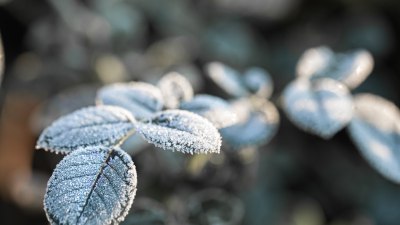Why Some Rain Smells Stronger Than Others: The Role of Bacteria
Explore the fascinating reasons behind the varying smell of rain and the crucial role bacteria play in this phenomenon.

Image by the-yuri-arcurs-collection on Freepik
Many people find the scent of rain to be one of nature's most refreshing aromas. However, not all rain smells the same. You may have noticed that after certain storms, the air is thick with a distinct, earthy fragrance. This variation in scent can be attributed to several factors, with bacteria playing a pivotal role.
The Science of Rain Smell
When rain falls, it interacts with the environment, capturing various particles and gases in the air. This phenomenon, known as 'petrichor,' refers to the distinct smell produced when rain hits dry soil. The term was coined by two Australian researchers in 1964, and it typically describes the pleasant earthy scent that accompanies a rainfall event. But why does this smell differ so greatly from one rainstorm to another?
Bacteria: The Unsung Heroes
One of the key contributors to the diverse smells of rain is a group of bacteria present in the soil. These microorganisms, particularly species from the genus Streptomyces, produce certain compounds that significantly influence the aroma. When rainfall occurs, water droplets disturb the soil, releasing these compounds into the atmosphere. The primary compound responsible for the smell is called geosmin, which is recognizable for its earthy scent.
What is Geosmin?
Geosmin is a compound that some bacteria produce, which can smell an awful lot like the rich aroma of damp earth after rain. It belongs to a class of compounds known as terpenoids. These substances play a vital role in creating the scent that many find so appealing. Interestingly, humans are particularly sensitive to geosmin; even the smallest concentrations can be detected by our olfactory senses. Streptomyces bacteria thrive in diverse environments, encompassing various soil types, which contributes to the differing scents associated with different regions after rainfall.
Variability Based on Environment
The intensity and type of rain scent can vary significantly depending on the geographical region and environmental conditions. For instance, a forested area may emit a different smell compared to an urban environment after rainfall. This difference is partly due to the unique set of microorganisms and the organic compounds present in the soil of these locales.
Furthermore, air temperature and humidity play critical roles in the release of smells. High temperatures can increase the volatility of geosmin, making the scent more pronounced. Humid conditions can also enhance how far the odor travels. Thus, a light rain during warm, humid weather will likely produce a stronger scent compared with a cold, heavy downpour.
Impact of Soil Composition
The composition of the soil is another vital factor influencing the smell of rain. Soils rich in organic matter, such as mulch or decaying leaves, can produce more intense scents due to the higher concentrations of bacteria and organic compounds. Soils low in organic material, like sandy soils, may emit less of the earthy aroma.
Seasonal changes can also cause variations in soil composition and bacterial activity. For example, spring rains may release a more vigorous aroma after the winter's thaw due to an increase in bacteria engagement as the soil warms up. In contrast, summer or autumn rainfall may yield scents influenced by different microbial communities due to changes in vegetation and organic decomposition processes during these seasons.
Plant Contributions
Aside from soil bacteria, plants also contribute to the scent of rain. During dry periods, plants release various volatile organic compounds (VOCs) into the air. When it rains, these compounds can mix with water droplets, enhancing the perfume-like quality of petrichor. Certain plants like pine trees release compounds such as pinene, which can add a refreshing scent to the air during a rain. Hence, specific plant types alongside soil bacteria work together to form a unique aromatic experience during rainfall.
Cultural Implications
The olfactory experience of rain has also played a significant role in various cultures and traditions. Different societies may attribute various meanings to the scent of rain, using it in art, literature, and religious practices. In many cultures, the smell of rain symbolizes renewal, fertility, and purification. The ability to relate emotionally to the scent might also connect to memories of past rainfalls, such as childhood experiences, family gatherings, or significant life events.
Urban vs. Rural Differences
Urban environments can complicate the aroma of rain. Rain falling on streets rather than soil will pick up a different range of chemicals, including those from cars and industry. As a result, the smell of rain in a city may differ considerably from that in a rural area. In urban environments, the presence of concrete and asphalt can hinder the scent's development, leading to a less earthy fragrance. Additionally, pollutants can alter the bacterial populations in the urban soil, affecting the scent produced after rainfall.
Microbial Life Cycle
Interestingly, the lifecycle of microorganisms also affects the rain smell. After a prolonged dry spell, bacterial populations, specifically Streptomyces, can diminish. When the first rain falls, it rehydrates the soil, causing these bacteria to flourish again rapidly, producing a burst of geosmin and other compounds. This sudden increase is typically what enhances the olfactory experience of fresh rain. In comparison, consistent moist conditions may yield a different spectrum of microbial life, influencing the scent complexity.
In summary, the variation in rain smell can be attributed to a complex interplay between soil bacteria, environmental factors, and seasonal changes. The main player, bacteria such as Streptomyces, produces geosmin, contributing to the pleasant, earthy aroma that many associate with rain. Variations in soil composition, type of vegetation, and urban versus rural environments all affect the intensity and character of the scent produced. Understanding these interactions provides a deeper appreciation for the phenomenon of petrichor and the ecological roles of bacteria in nature.











